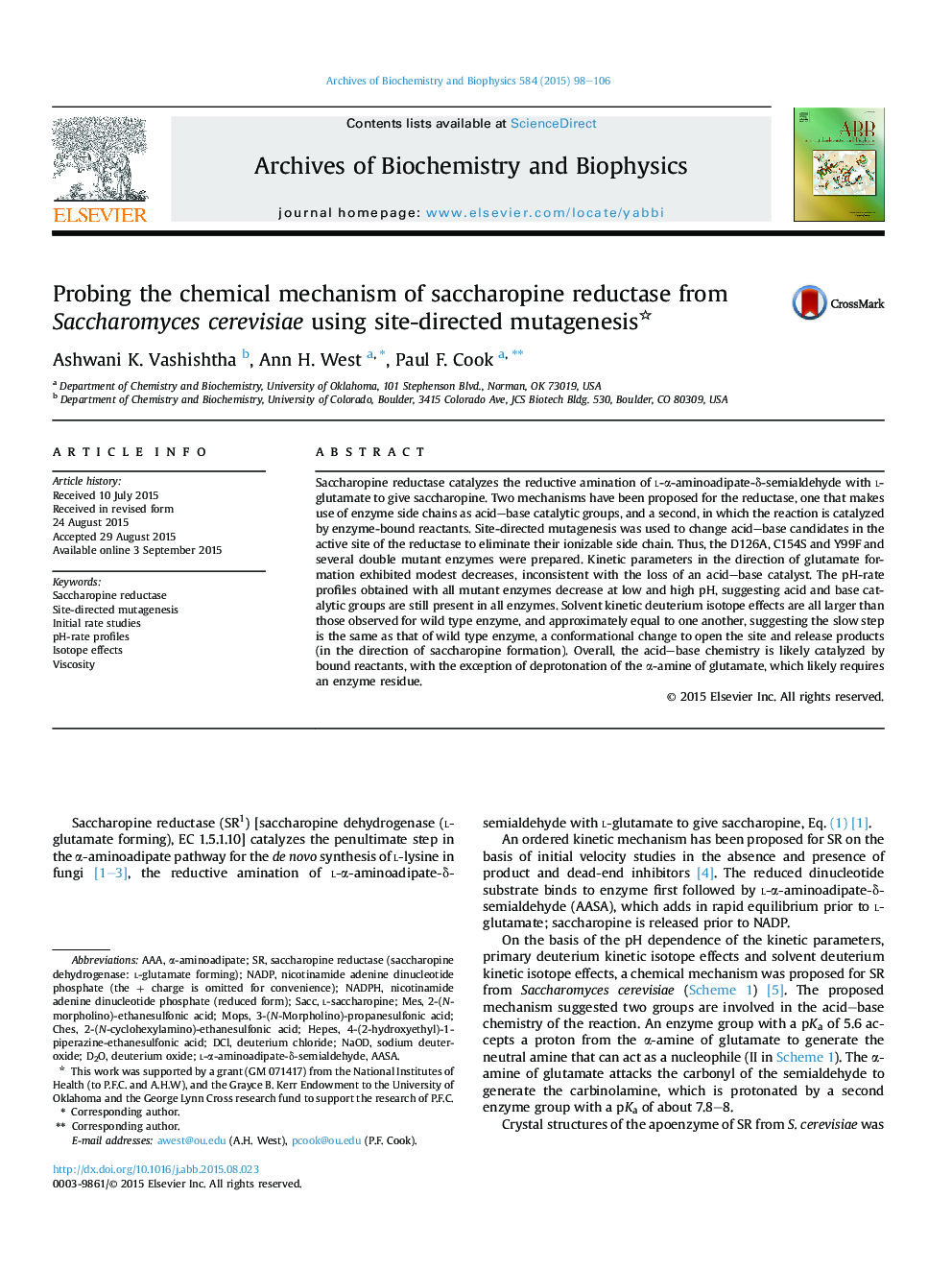| کد مقاله | کد نشریه | سال انتشار | مقاله انگلیسی | نسخه تمام متن |
|---|---|---|---|---|
| 1924874 | 1536319 | 2015 | 9 صفحه PDF | دانلود رایگان |

• D126, C154, and Y99 were changed alone and in pairs to give mutant enzymes.
• Small changes in rate constants suggest residues are not catalytically essential.
• pH-rate profiles are qualitatively similar to those of wild type enzyme.
• Data are consistent with the intramolecular mechanism proposed from QM/MM studies.
• All residues mutated likely facilitate a conformational change to close the site.
Saccharopine reductase catalyzes the reductive amination of l-α-aminoadipate-δ-semialdehyde with l-glutamate to give saccharopine. Two mechanisms have been proposed for the reductase, one that makes use of enzyme side chains as acid–base catalytic groups, and a second, in which the reaction is catalyzed by enzyme-bound reactants. Site-directed mutagenesis was used to change acid–base candidates in the active site of the reductase to eliminate their ionizable side chain. Thus, the D126A, C154S and Y99F and several double mutant enzymes were prepared. Kinetic parameters in the direction of glutamate formation exhibited modest decreases, inconsistent with the loss of an acid–base catalyst. The pH-rate profiles obtained with all mutant enzymes decrease at low and high pH, suggesting acid and base catalytic groups are still present in all enzymes. Solvent kinetic deuterium isotope effects are all larger than those observed for wild type enzyme, and approximately equal to one another, suggesting the slow step is the same as that of wild type enzyme, a conformational change to open the site and release products (in the direction of saccharopine formation). Overall, the acid–base chemistry is likely catalyzed by bound reactants, with the exception of deprotonation of the α-amine of glutamate, which likely requires an enzyme residue.
Journal: Archives of Biochemistry and Biophysics - Volume 584, 15 October 2015, Pages 98–106